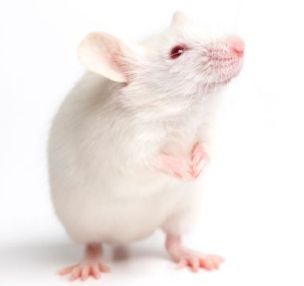Navigation
Hair Loss News Archives
2005
Mouse might clean up
for humans
By Deborah Smith
Science EditorSeptember 5, 2005
You could say it's a compulsively clean mouse.
It eats, drinks, explores and builds nests like a normal rodent. But it also grooms itself obsessively, licking and biting itself until most of its hair falls out and it has wounds on its skin.

Genetically, it varies from normal mice in that just one of its more than 25,000 genes, called Hoxb8, has been inactivated, or knocked out.
Mario Capecchi, the American scientist who co-pioneered the technique for producing so-called knockout mice, told a conference in Sydney yesterday that he hoped his team's recent creation of mice with the aberrant grooming behaviour would lead to new therapies for obsessive compulsive disorder in people.
In particular, some have a condition called trichotillomania and uncontrollably pull out their hair. It "can be so severe as to lead to baldness and loss of eyelashes and eyebrow hair", Professor Capecchi said.
His team is testing to see whether people with this condition also have defects in their Hoxb8 gene.
Professor Capecchi, of the University of Utah, was a key speaker yesterday at the 15th International Society of Developmental Biologists Congress. It is being attended by more than 900 researchers who study the way organs form and the means by which a single-celled egg develops into an adult animal with a trillion specialised cells.
Knockout mice, which provide animal models for many diseases, have revolutionised medical research since Professor Capecchi's technique for accurately replacing a gene with a modified one led to the creation of such mice in 1989 - a scientific first.
Yesterday, he said it was now possible to create mice where a gene could be inactivated, or activated, at a specific stage of life and specific location in the body, rather than from before birth in every cell. His team has used this refined gene targeting technique to create the first mouse model for a highly aggressive childhood muscle cancer called alveolar rhabdomyosarcoma, which kills 80 per cent of sufferers within five years of diagnosis.
Mice made the traditional way died before birth. The new mice, which Professor Capecchi estimates cost about $US250,000 ($327,000) to produce, analyse and maintain, have the abnormal gene activated after birth and only in muscle cells.
Professor Capecchi received the Lasker Award for Basic Medical Research in 2001. The award is often seen as a forerunner to a Nobel Prize.
A BOON TO MANKIND
· More than 7000 kinds of knockout mice have been created.
· They provide animal models for conditions such as cancer, heart disease, Alzheimer's disease and cystic fibrosis.
